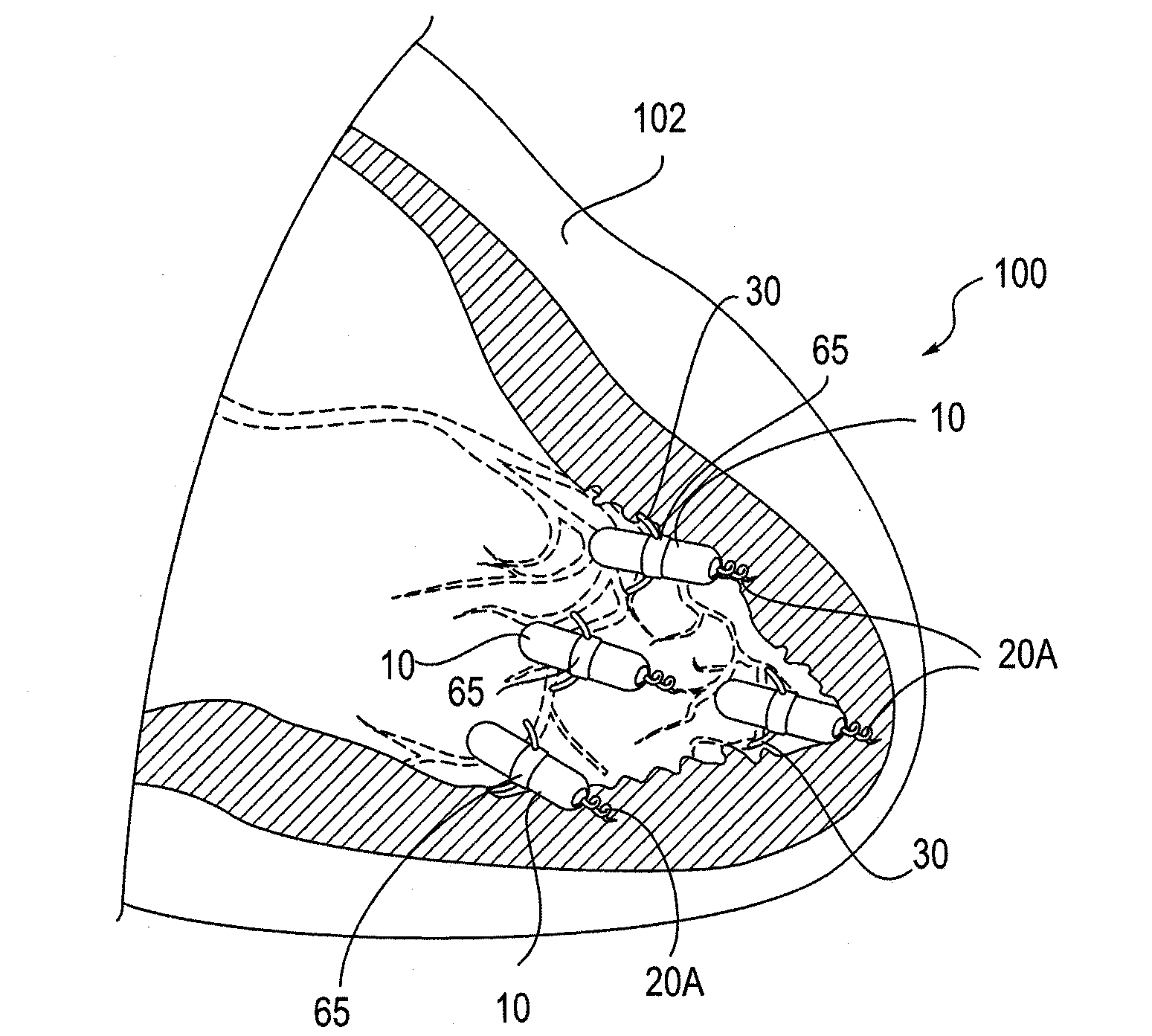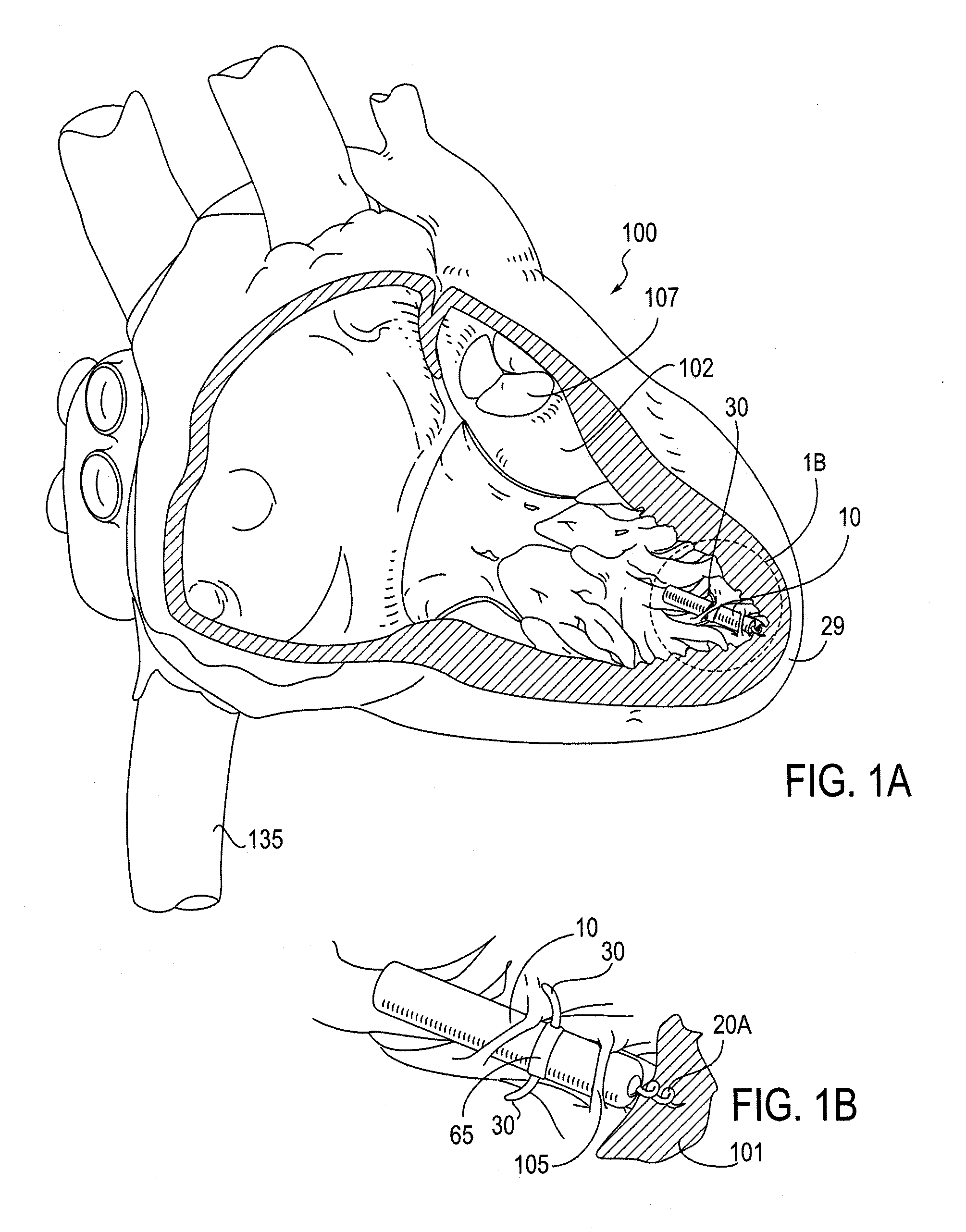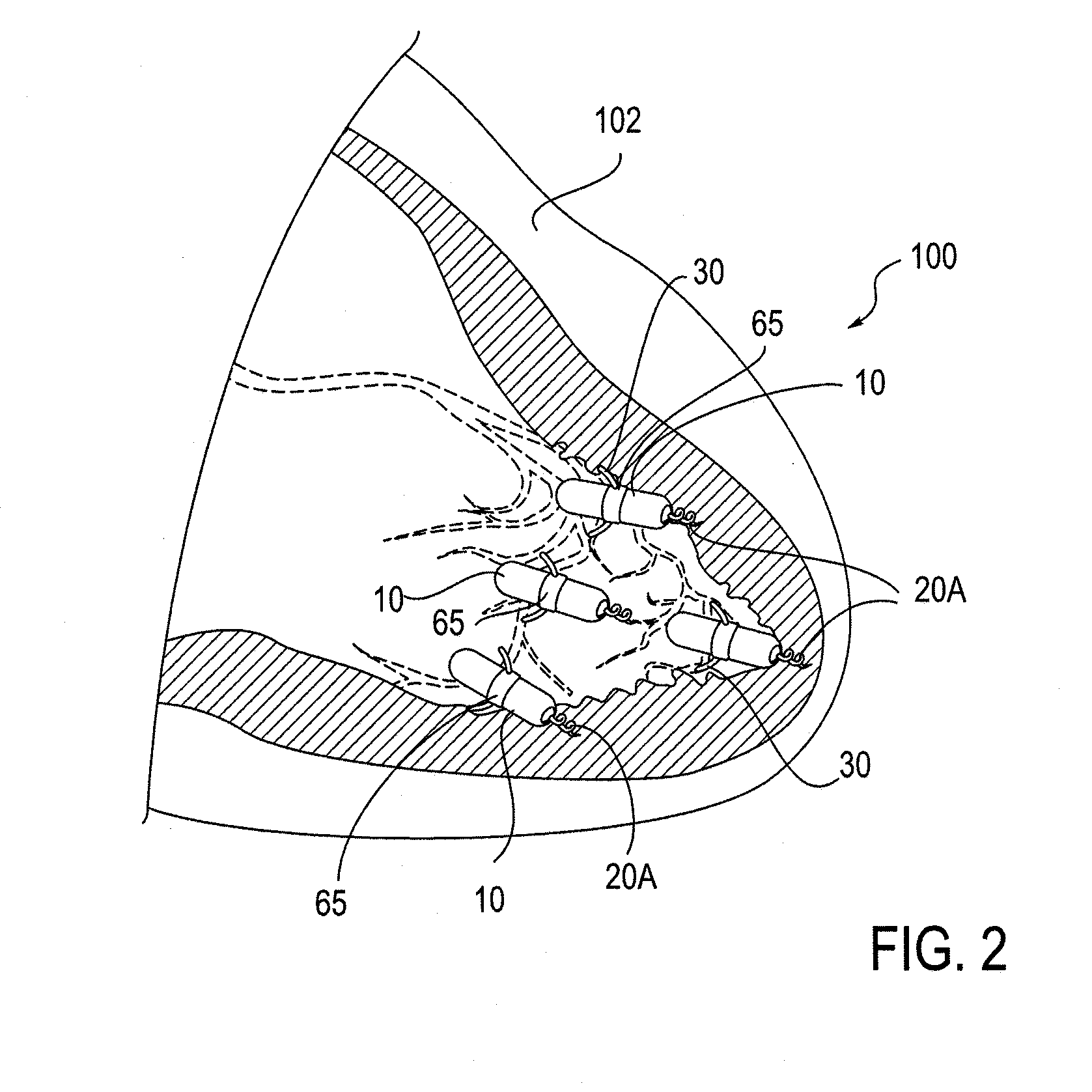Leadless Cardiac Pacemaker with Secondary Fixation Capability
a technology of lead-free cardiac pacemakers and secondary fixation, which is applied in the direction of electrotherapy, heart stimulators, therapy, etc., can solve the problems of subcutaneous pulse generators that can exhibit erosion, disconnection, infection, disconnection, etc., and prolong patient recovery. the effect of recovery
- Summary
- Abstract
- Description
- Claims
- Application Information
AI Technical Summary
Benefits of technology
Problems solved by technology
Method used
Image
Examples
second embodiment
[0058]The U.S. patent publications listed in the background above describe and depict two basic types of primary fixation elements. One embodiment of a primary fixation element is a helix (e.g., FIG. 1A of US 2007 / 0088418) that may be screwed directly into the myocardium to form a very stable and secure fixation. The screwable helix approach to primary fixation may be considered “active” in that it entails a screwing action to seat it, and it is at least to some extent invasive of the myocardium. a primary fixation element described therein includes a small set of tines (e.g., FIG. 1B of US 2007 / 0088418) that may be used alone or in combination with a screwable helix, and which are designed particularly to establish lateral stability on the myocardial surface. The primary fixating tines may be considered relatively “passive”, in comparison to the actively engaging screwable helix, as the engagement of the tines to the surface does not involve a screwing action, and the engagement is...
embodiment 30
[0069]FIGS. 7A-7C show an embodiment of a leadless biostimulator 10 with a passive secondary fixating element 30 at its distal end, in a series of views similar to that of FIG. 4. The entangling element embodiment 30 depicted here differs from the embodiment depicted in FIG. 4 by having more tines, and by the tines having a knob at their distal end, which may further enhance the ability of the tines to passively engage structure in the heart. The tines are mounted on a rotatable collar 65. FIG. 7A shows the leadless biostimulator 10 in a deployment tube 200 for insertion, with distally-directed secondary fixating tines 30 collapsed distally within the deployment tube. FIG. 7B shows the biostimulator after deployment with the tines 30 released and projecting outward. FIG. 7C shows an end view of the biostimulator with the tines 30 projecting outward.
[0070]FIG. 8 shows an embodiment of a leadless biostimulator 10 with a primary fixation system 20A at the distal end and a pair of clip-...
PUM
 Login to View More
Login to View More Abstract
Description
Claims
Application Information
 Login to View More
Login to View More - R&D
- Intellectual Property
- Life Sciences
- Materials
- Tech Scout
- Unparalleled Data Quality
- Higher Quality Content
- 60% Fewer Hallucinations
Browse by: Latest US Patents, China's latest patents, Technical Efficacy Thesaurus, Application Domain, Technology Topic, Popular Technical Reports.
© 2025 PatSnap. All rights reserved.Legal|Privacy policy|Modern Slavery Act Transparency Statement|Sitemap|About US| Contact US: help@patsnap.com



